Over the last decade, I have spent over $100,000 building backlinks for my clients.
Some with big link-building budgets, and some small.
In this post, I’m going to share my 10 favorite tools that can help you do link-building without breaking the bank.
Let’s get started.
My 9 Favorite Affordable Link Building Tools
1. SE Ranking – All-in-One SEO Suite
If I wanted a cheaper, a little toned down version of Semrush, I’d choose SE Ranking. It offers most of the benefits of larger suites like Semrush but at a fraction of the cost.
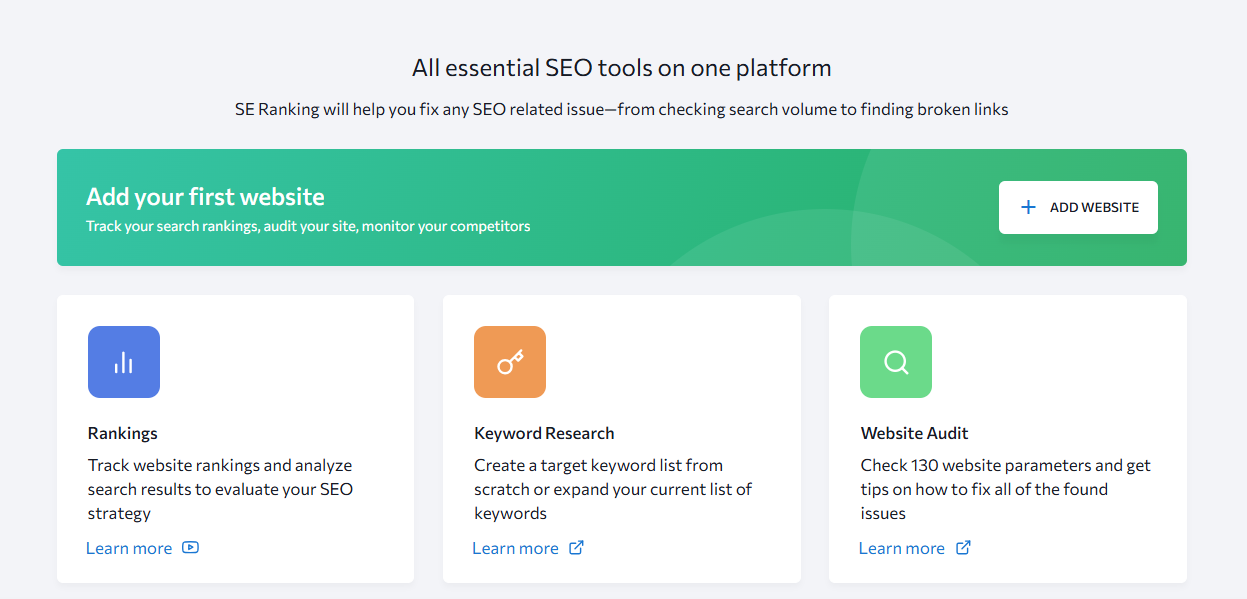
↳ For starters, it offers complete backlink analysis.
SE Ranking’s Backlink Checker tool gives you a fairly detailed backlink report of a website– whether yours or your competitor’s.

This lets you compare your domain with competitors, analyze link profiles, and spot link-building opportunities.
It also has a clean interface. and the metrics, while not as granular as some high-end tools, give you enough insight to make informed decisions.
↳ It makes researching and tracking competitors simpler.
The Backlink Gap Analyzer lets you identify websites that are linking to your competitors but not to you. You can compare your domain to up to five competitor domains and find new linking opportunities.
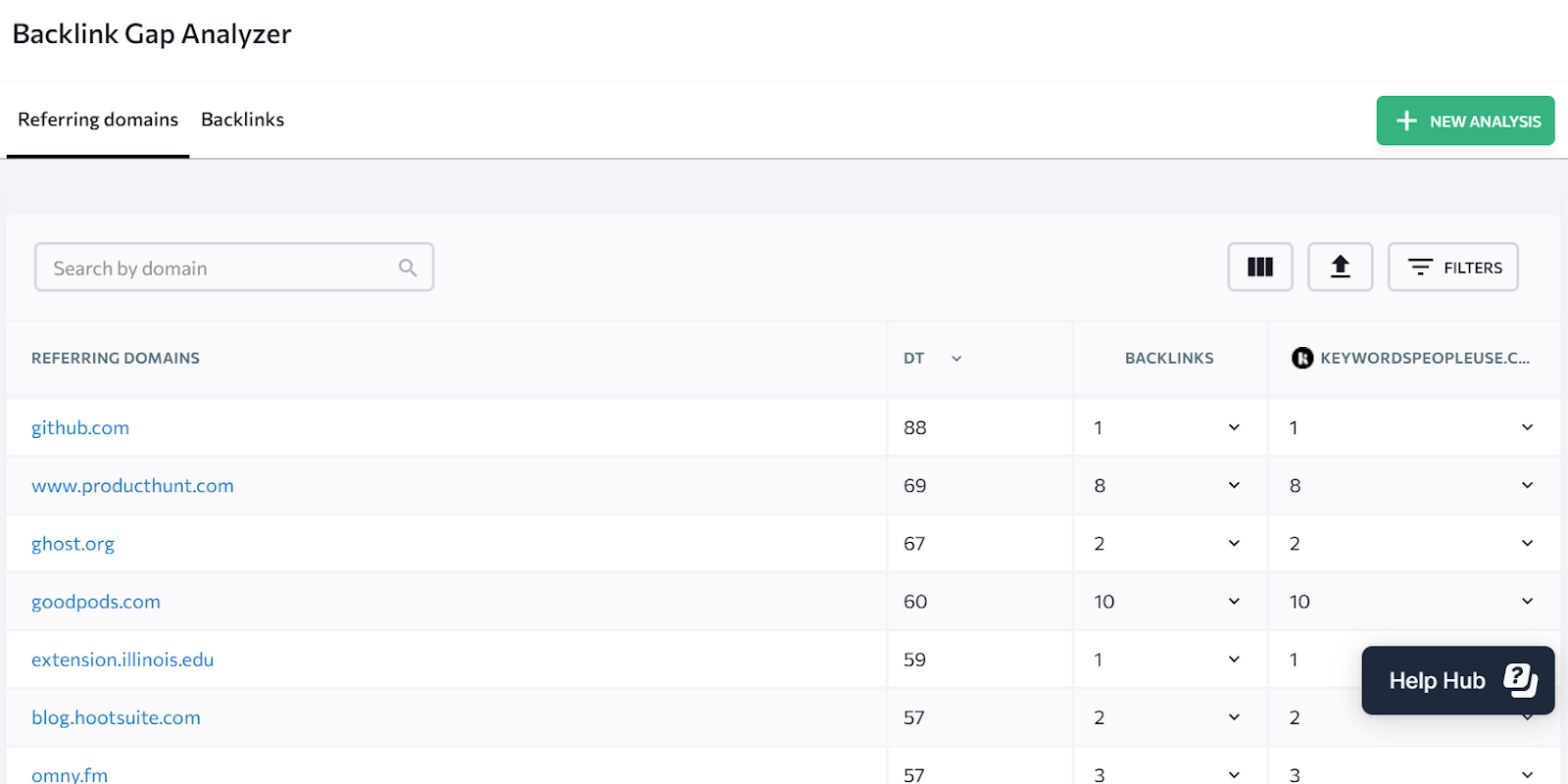
It also presents data like referring domains and link quality in a way that you can easily prioritize prospects.
Plus, its interface is so intuitive and user-friendly that you won’t have any trouble using it even as a beginner.
↳ And it’s super affordable.
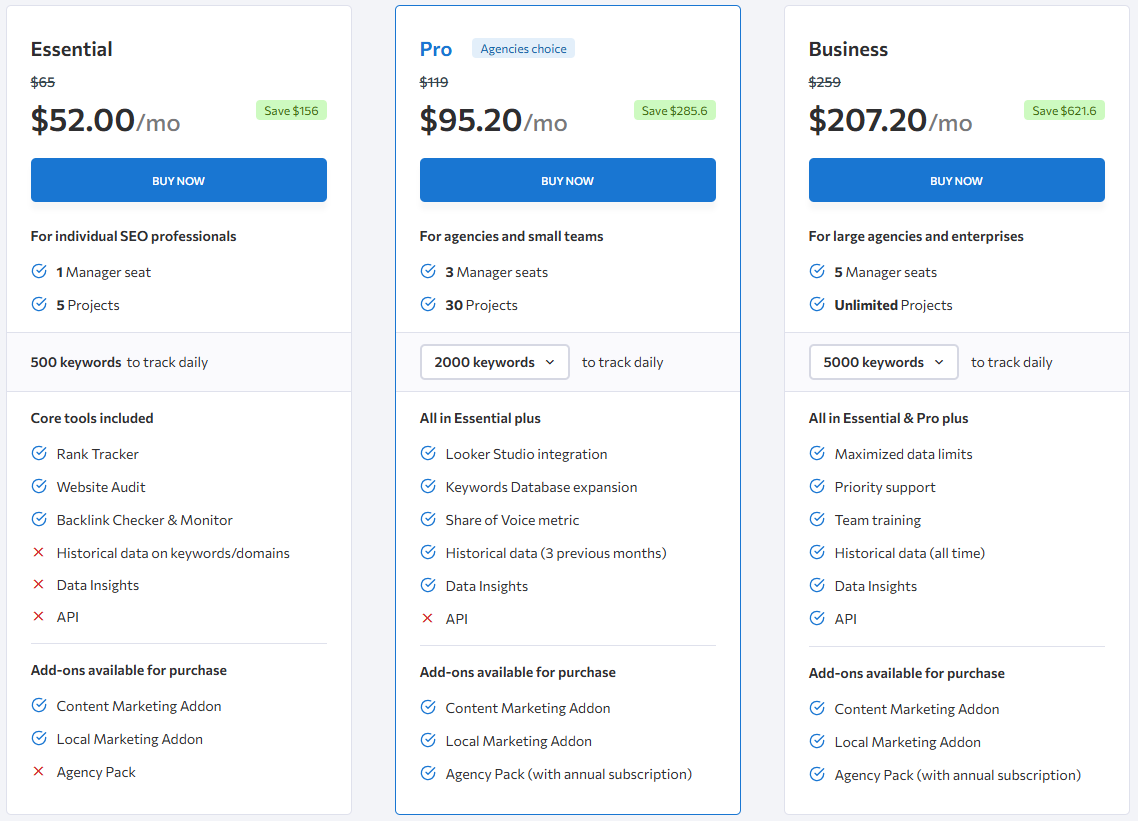
With plans starting around $52/month, SE Ranking is a budget-friendly yet reliable all-in-one solution for link-building and overall SEO. It covers the basics and also scales well with your needs as you grow your backlink profile.
| Pros | Cons |
|---|---|
| ✔ Offers many benefits of larger suites at a lower cost. | ❌ Metrics are not as granular as those in some high-end tools. |
| ✔ Provides complete backlink analysis for both your and competitors’ domains. | ❌ May lack some advanced features available in more expensive suites. |
| ✔ Features a Backlink Gap Analyzer to identify new outreach targets. | |
| ✔ Has an intuitive, user-friendly interface suitable for beginners. | |
| ✔ Organizes data like referring domains and link quality for quick decision-making. | |
| ✔ Scales well with your growing backlink profile. | |
| ✔ Very affordable with plans starting at around $52/month. |
2. Hunter.io – Find Contacts for Outreach
I use Hunter.io almost every week to find and verify email addresses for link-building outreach. It saves me from the tedious task of manually searching for legit contacts on websites.
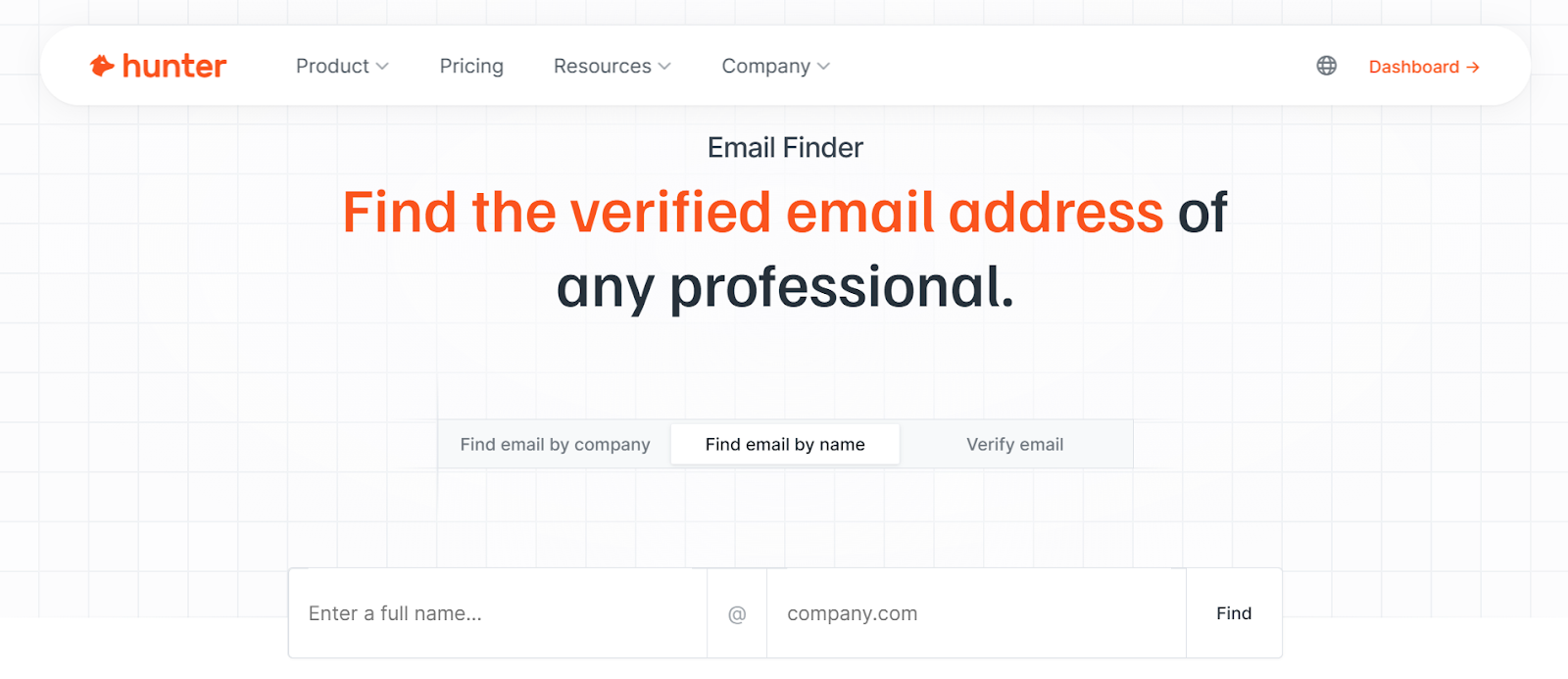
↳ You can easily find prospects’ contact information.
Hunter.io’s Domain Search scrapes publicly available data from any website to find all the professional email addresses associated with it.

You can also filter the contacts by department. I find it really helpful when targeting editors or content managers for guest posts.
But on the flip side, it’s not as effective at finding the social handles. I’ve had incidents where a website had an official LinkedIn page but it won’t show up in the Hunter’s search.
As someone who prefers LinkedIn for outreach, it sucks that I can’t rely on Hunter.io.
↳ The email verification & confidence score assures me that I’m targeting legit email addresses.
One of my favorite features is its email verifier, which assigns a Confidence Score to each address. This way I can prioritize contacts that are more likely to respond.

As a result, I get lesser email bounces which improves campaign performance and also protects my sender reputation.
↳ Plus, it has a user-friendly interface.
Hunter.io’s dashboard is so clean and intuitive that even if you’re new to outreach, you can quickly figure out how to do searches, apply filters, and export lists to your CRM or Google Sheets.
↳ And though it has a credit-system, it’s still pretty affordable.

The free plan lets you do up to 25 searches per month, which is a good starting point. For more intensive campaigns, you can subscribe to a paid plan, which is quite affordable starting at $34/month.
However, the cost can add up real quick when you’re doing high-volume outreach (because of the credit system).
Still, Hunter.io is one of the best budget-friendly backlink monitoring tools for light to moderate use.
To learn more, check out this detailed Hunter.io review.
| Pros | Cons |
|---|---|
| ✔ Saves time by automating the search for email contacts. | ❌ Credit system may limit high-volume outreach. |
| ✔ Finds professional email addresses with a simple domain search. | ❌ Costs can add up if you need to perform many searches. |
| ✔ Filters by department to target the right contacts. | |
| ✔ Email verifier assigns a Confidence Score for prioritizing valid addresses. | |
| ✔ Reduces bounces, improving campaign performance and protecting sender reputation | |
| ✔ Easy-to-use, clean dashboard ideal for beginners | |
| ✔ Free plan available; paid plans start at about $34/month |
3. Snov.io – Find Social Contact for Link-Building Outreach
Snov.io is another excellent tool that extracts emails from domains and also verifies them. Sounds pretty similar to Hunter.io? But it also helps automate drip campaigns. There’s more.
↳ Along with emails, you can also find social media handles of prospects.
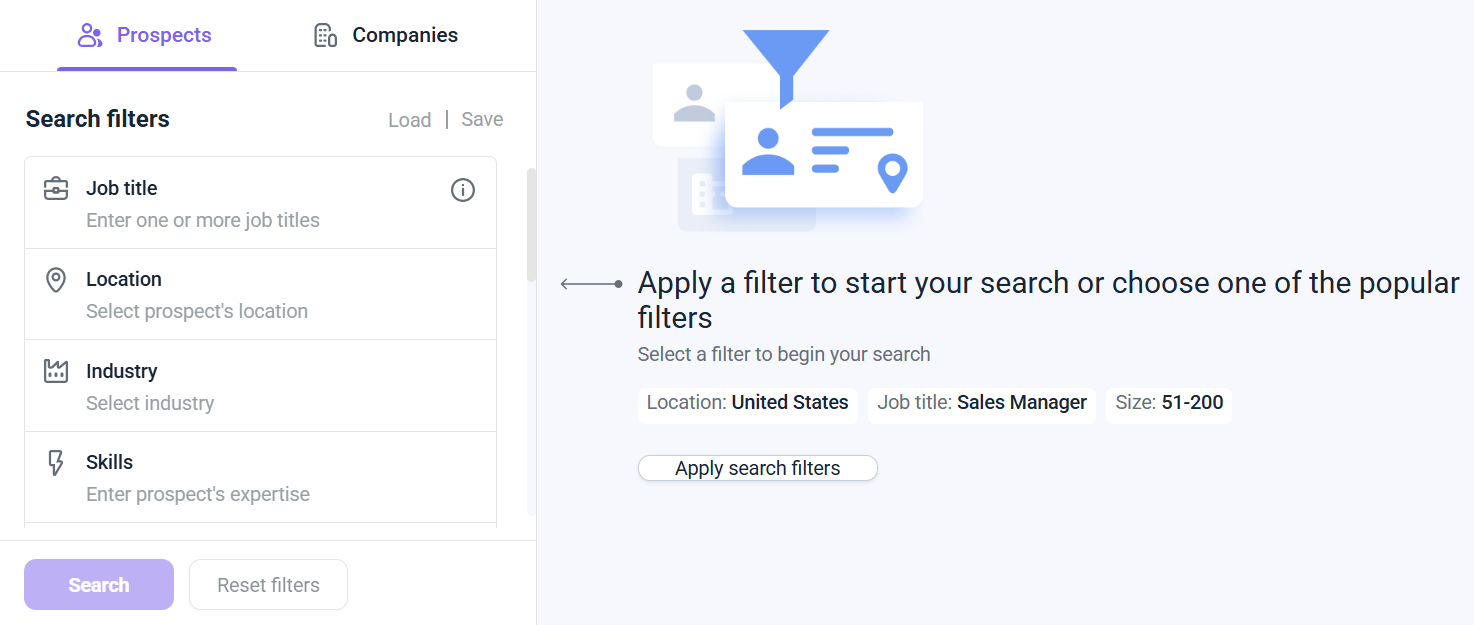
It not only searches for emails across websites but also integrates with social platforms like LinkedIn to give you additional contact details. I find this really useful for my LinkedIn outreach.
↳ And I love its ability to automate follow-up sequences.

Once you’ve collected a list, you can set up personalized drip campaigns that automatically send follow-up emails if there’s no response. This automation really helps scale outreach without manual intervention.
↳ Plus, its so well-integrated and easy to use.
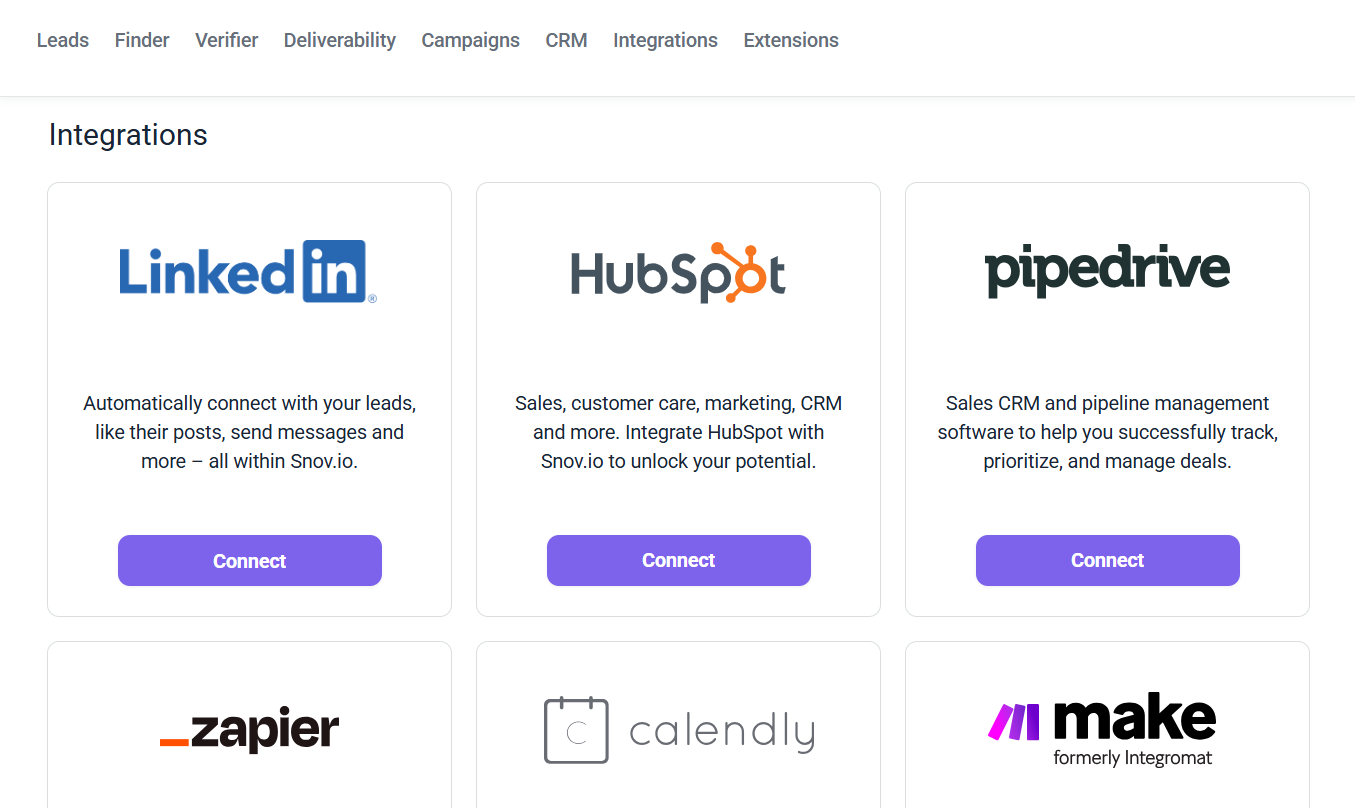
Snov.io integrates well with Gmail and Google Sheets, so you can export lists easily. It also has a clean interface that makes setting up campaigns very easy.
↳ And it’s easy on the pocket– with some free features.

Snov’s plans start at just $30/month, which is pretty affordable for small business, freelancers, and beginners. In fact, you can use a lot of its basic features at NO cost.
Bottom line, you should try out Snov.io if you’re looking for a free/low-cost tool to find prospects’ contact details and automate your drip campaigns.
| Pros | Cons |
|---|---|
| ✔ Finds and verifies emails easily, including via social platforms like LinkedIn. | ❌ May lack advanced features found in more comprehensive outreach suites. |
| ✔ Automates follow-up sequences with personalized drip campaigns. | ❌ It only helps with the outreach aspect of link-building. |
| ✔ Integrates well with Gmail and Google Sheets for smooth data export. | |
| ✔ User-friendly interface that’s simple even for beginners. | |
| ✔ Offers free features alongside affordable plans starting at $30/month. |
4. Anymail Finder – Pay-Per-Use Email Finder
If you don’t have a lot of use for a link-building tool, Anymail Finder’s pay-per-use model is perfect for you. And I love the fact that I only have to pay for the confirmed, verified emails.
↳ It’s a no-BS email finder with a solid verification process.
Anymail Finder finds and verifies email addresses just like Hunter or Snov. But unlike the two, you only pay for verified emails. So, you know that you’re spending your money on what actually works.
It has also helped keep my email bounce rates low and made the whole outreach campaign a lot more effective.

↳ You can also find email addresses in bulk.
You can upload a list of people, like decision makers or companies, to its bulk search tool and it will find email addresses associated with them.
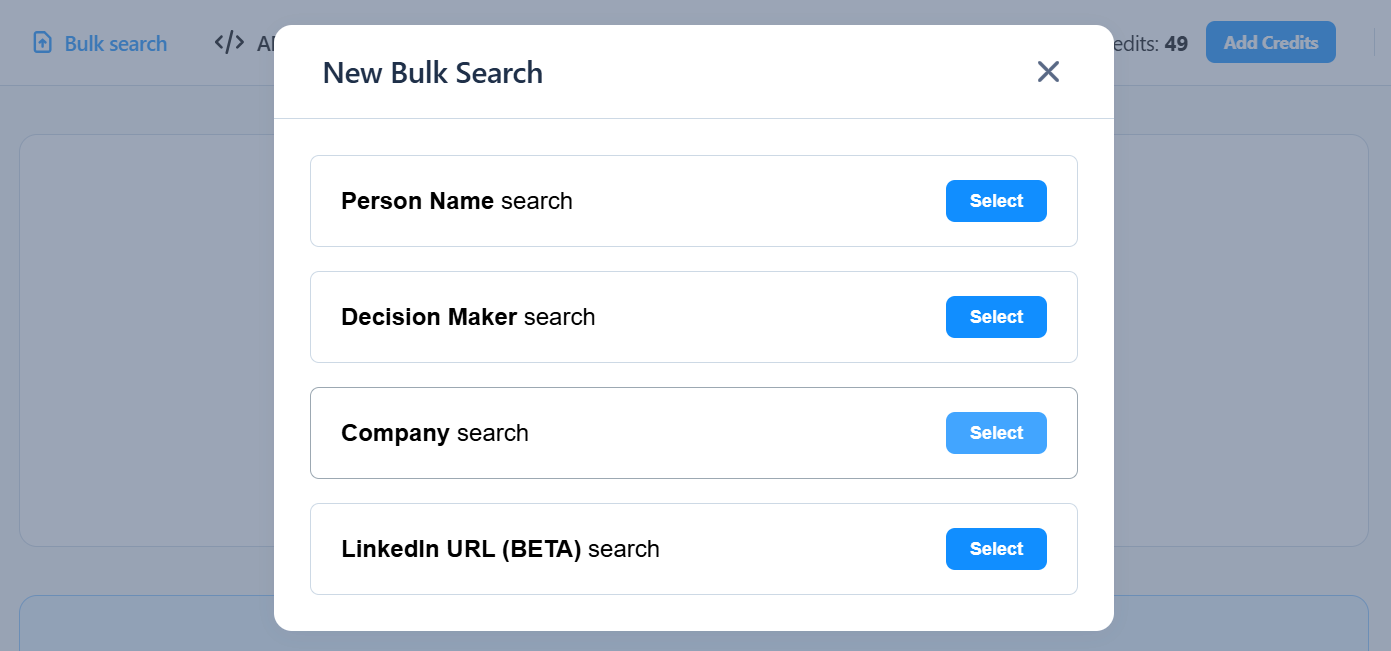
It even has a beta feature that lets you add LinkedIn URLs and extracts email addresses from them.
↳ Plus, it’s super budget-friendly.
If you’re a beginner or doing link-building outreach for a small business, you can use Anymail Finder for as low as $9 a month. There’s also no monthly commitment. I just pay for what I need, when I need it.
And since Anymail Finder charges me only for the emails it’s able to confirm as deliverable, it’s good to know that I am only investing in leads that add real value.
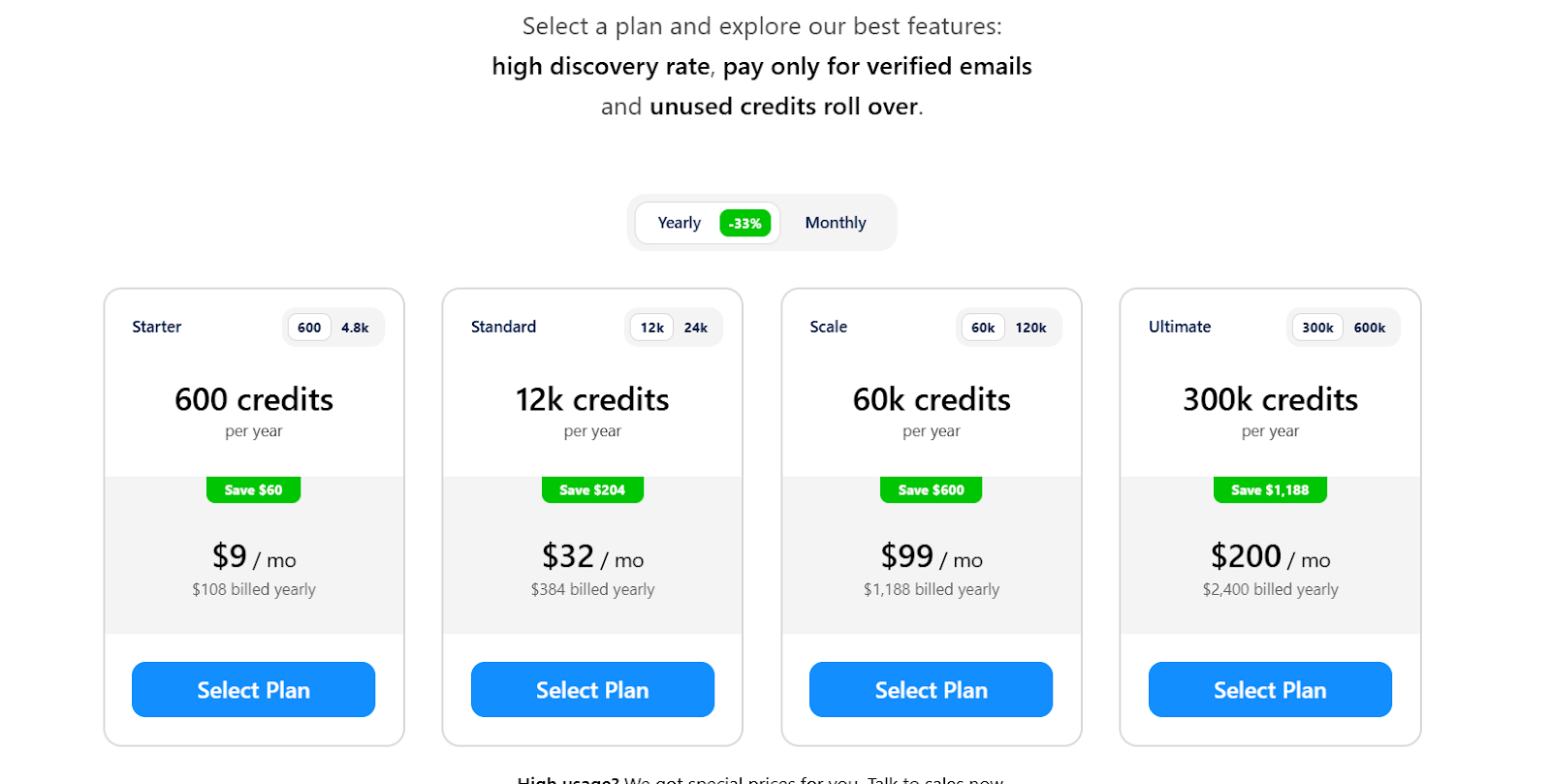
Overall, if you want to find solid leads for link-building outreach and only want to pay for what works, there’s probably nothing better than Anymail Finder right now.
| Pros | Cons |
|---|---|
| ✔ Only pay for confirmed, verified emails. | ❌ Costs can add up with high email volume. |
| ✔ Rigorously verifies each email to keep bounce rates low. | ❌ Lacks additional features beyond email verification. |
| ✔ Highly cost-effective for small businesses and beginners. | |
| ✔ No monthly commitment; pay only for what you use. |
5. Linkody – Cheap Backlink Tracker with Flexible Plans
Starting at just $14.90 a month, Linkody is one of the best low-cost tools for tracking backlinks.
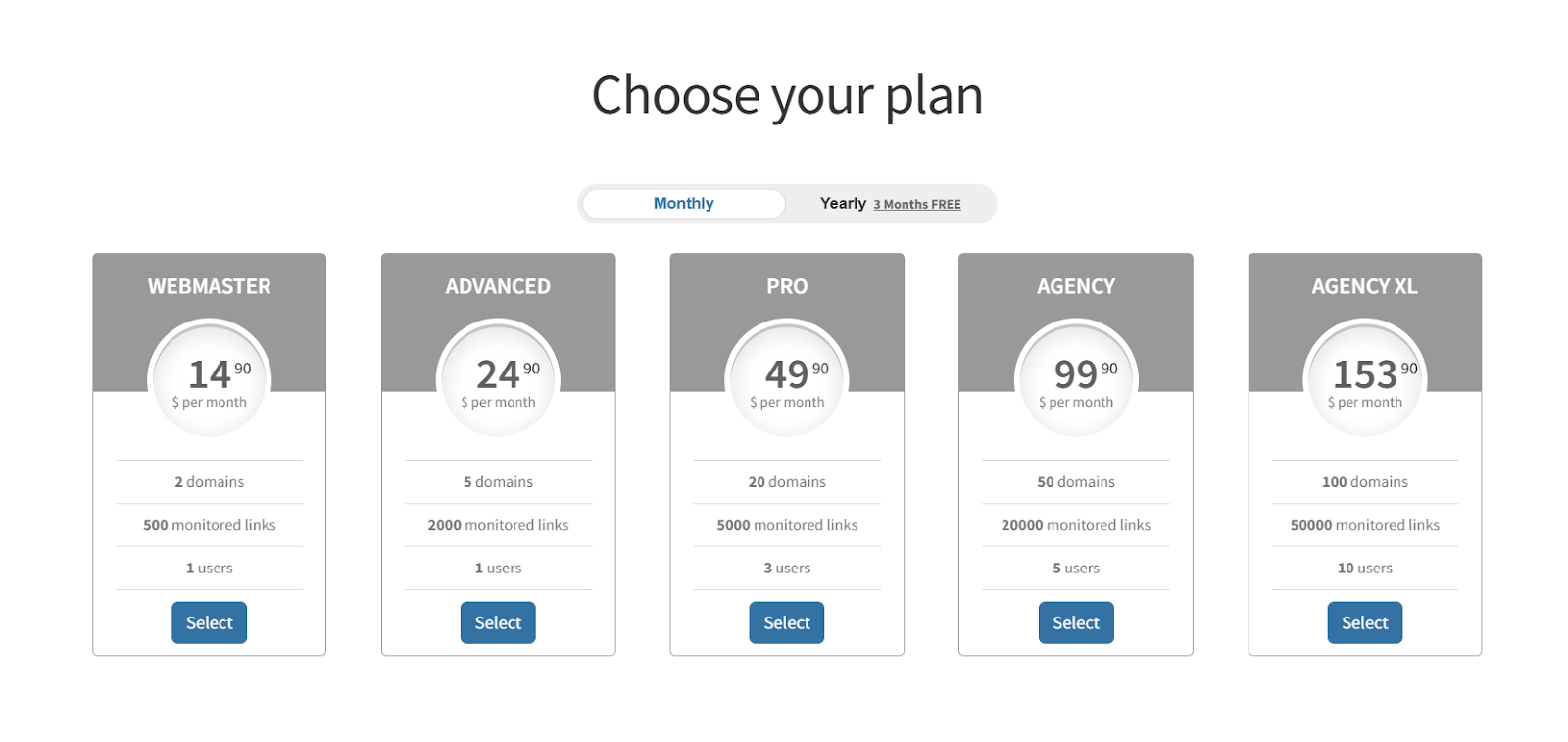
↳ If you’re a link-building with a small budget, you’ll love Linkody.
Linkody starts as cheap as just $14.90 and it even gives you a free 30-day trial. So, you can try it out before committing to it financially. And honestly, 30 days is very gracious.
In fact, Linkody’s higher plans also make so much sense. For the features you get, they all still provide a great value for money. But affordability is not all that is there is Linkody.
↳ For starters, you can track backlinks in real time.

With Linkody, I can see new backlinks as they happen. It also sends me alerts if I lose any important link.
And since it is integrated with Moz Analytics, you know you can rely on its backlink data.
↳ I find the competitor insights specially useful.
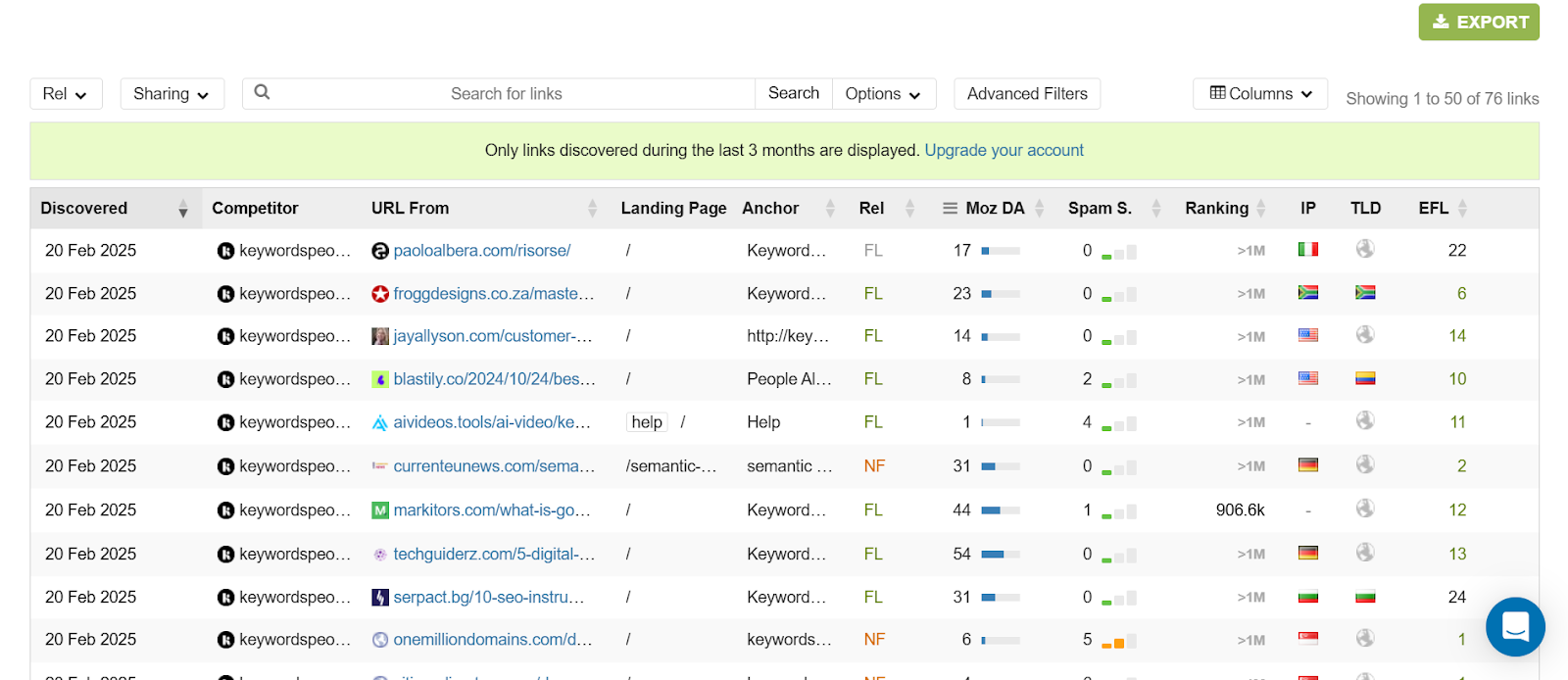
It even lets you monitor competitor backlink profiles. This gives you an idea of which sites might be open to linking to your content as well.
↳ And its user-friendly dashboard is so easy to navigate.

It has a clean UI and clear metrics so I don’t have to spend too much time making sense out of the data. Linkody quickly shows me what’s wrong and I jump right to action.
Linkody is a simple and efficient backlink tracking tool that gives you all the essential data you need at quite a cheap price.
| Pros | Cons |
|---|---|
| ✔ Real-time tracking of new backlinks and alerts for lost ones. | ❌ Lacks advanced features compared to more comprehensive tools. |
| ✔ Integrated with Moz Analytics for enhanced data insights. | ❌ May not satisfy advanced users needing deeper analytics. |
| ✔ Provides competitor backlink profiles for outreach opportunities. | |
| ✔ User-friendly dashboard with clear metrics. | |
| ✔ Offers a free 30-day trial. |
6. Majestic SEO – Backlink Check Metrics
Majestic gives you all the important metrics needed to check a backlink’s quality without much noise.
↳ Its Trust Flow and Citation Flow metrics make so much sense.
These scores basically tell you whether a backlink is trustworthy and high-quality enough to keep or pursue. Or should you disavow it.
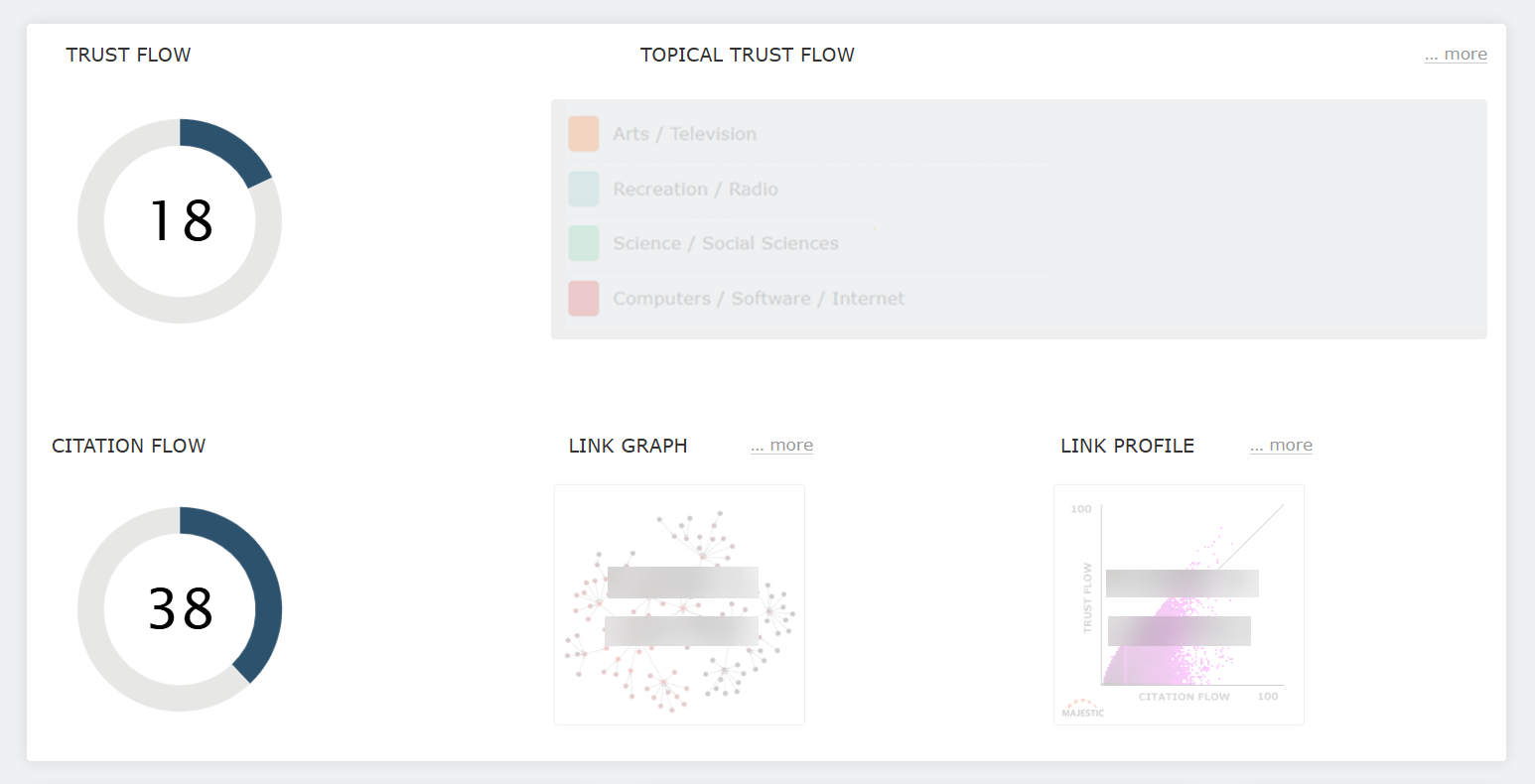
↳ I also love how Majestic visualizes the link data.

These charts and graphs map out your entire link network and give you a clear picture of where your links are coming from. I use it to spot link farms or spammy sources that could harm my backlink profile.
↳ It also shows you how your backlink profile has trended over time.

How do you know your link-building campaign is working? Majestic helps you understand the long-term impact of your link-building efforts with easy-to-digest reports. It shows you how your backlink metrics have trended over time, so you can optimize your strategies.
↳ Plus, it’s quite affordable and you can do a lot for free.
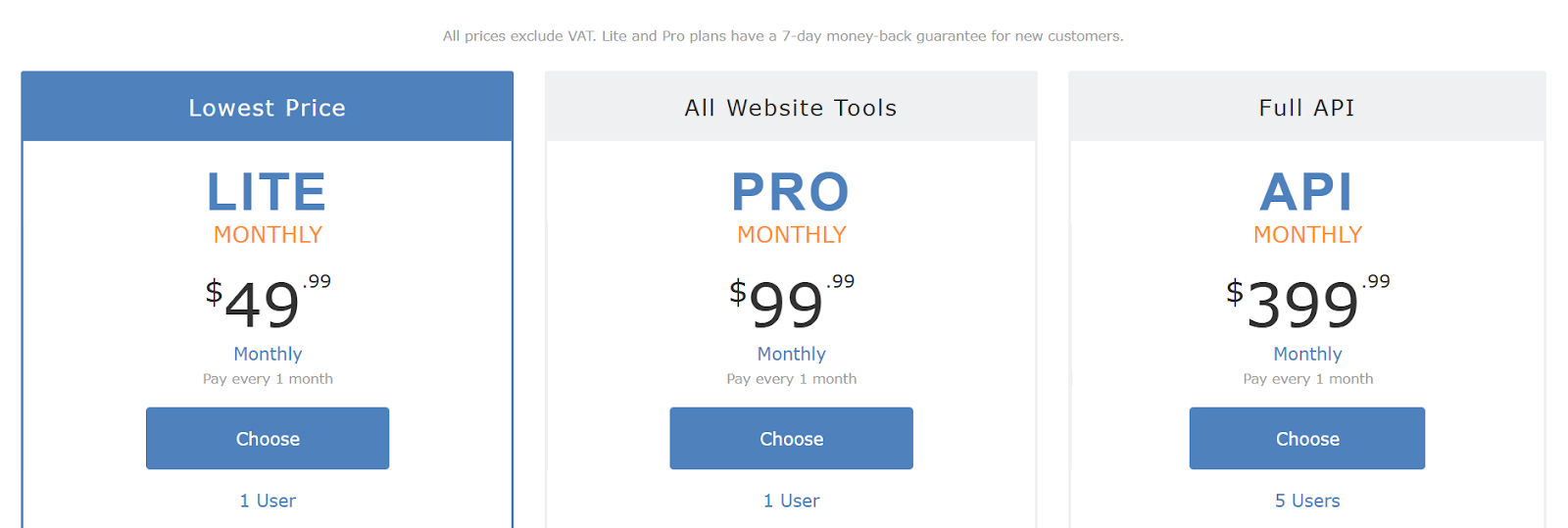
Majestic is fairly affordable with a starting price of $49.99 per month. And I love the fact that you can run some basic checks without any subscription at all.
It’s a lot more than just a backlink tracking and analysis tool. You can use it for other SEO stuff as well, which makes the price more than worth it.
| Pros | Cons |
|---|---|
| ✔ Offers detailed backlink metrics with Trust Flow and Citation Flow. | ❌ Lacks some advanced features found in more comprehensive SEO suites. |
| ✔ Visualizes your link network for easy spotting of spammy sources. | |
| ✔ Provides a historical index to track backlink profile evolution. | |
| ✔ Affordable lower-tier plans at about $49/month with free basic checks available. |
7. Mangools (LinkMiner) – Low-Cost Suite for Link Building & Other SEO Stuff
LinkMiner is a part of Mangools’ SEO tools suite. I often use it for analyzing backlinks, researching competitors’ backlink profiles, and finding new link-building opportunities.
↳ LinkMiner’s gives you detailed backlink reports.
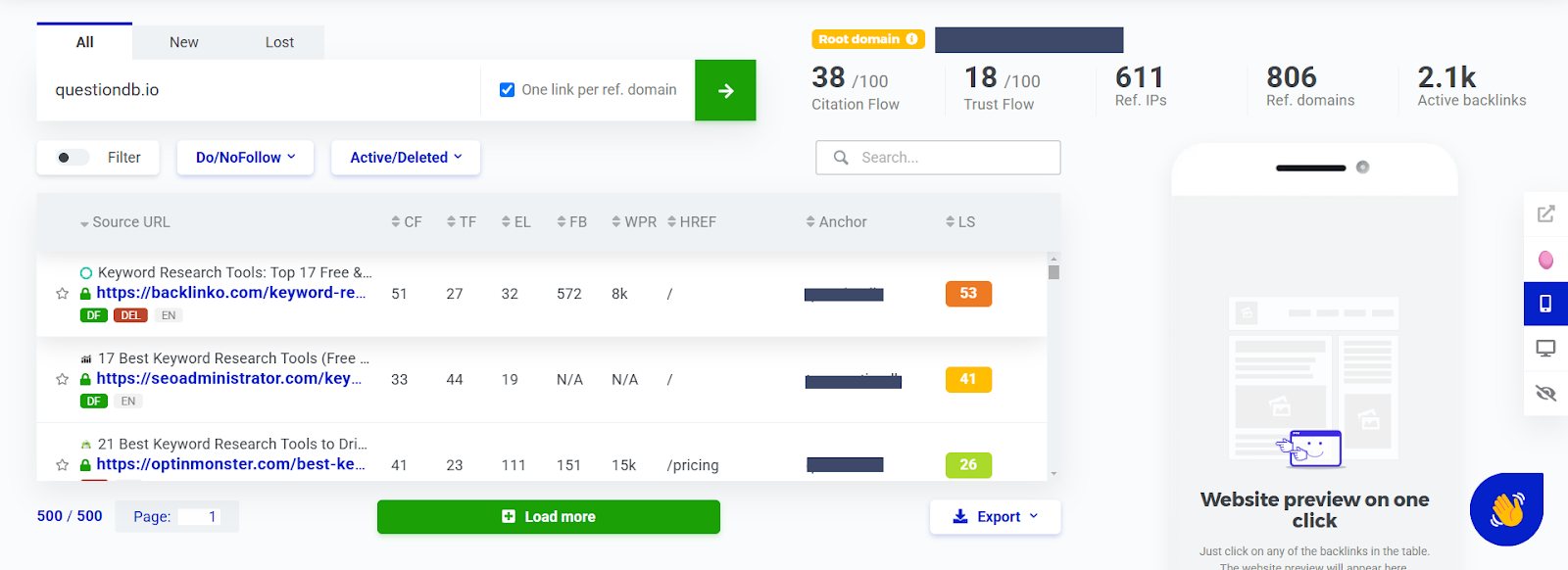
LinkMiner gives you a detailed look at your backlink profile, with metrics like new and lost links, follow/nofollow status, and domain authority. You can also track your new and lost links.
Essentially, it’s all that you really need to maintain a healthy backlink profile and find new opportunities.
↳ Plus, it has a user-friendly UI and well integrated tools.
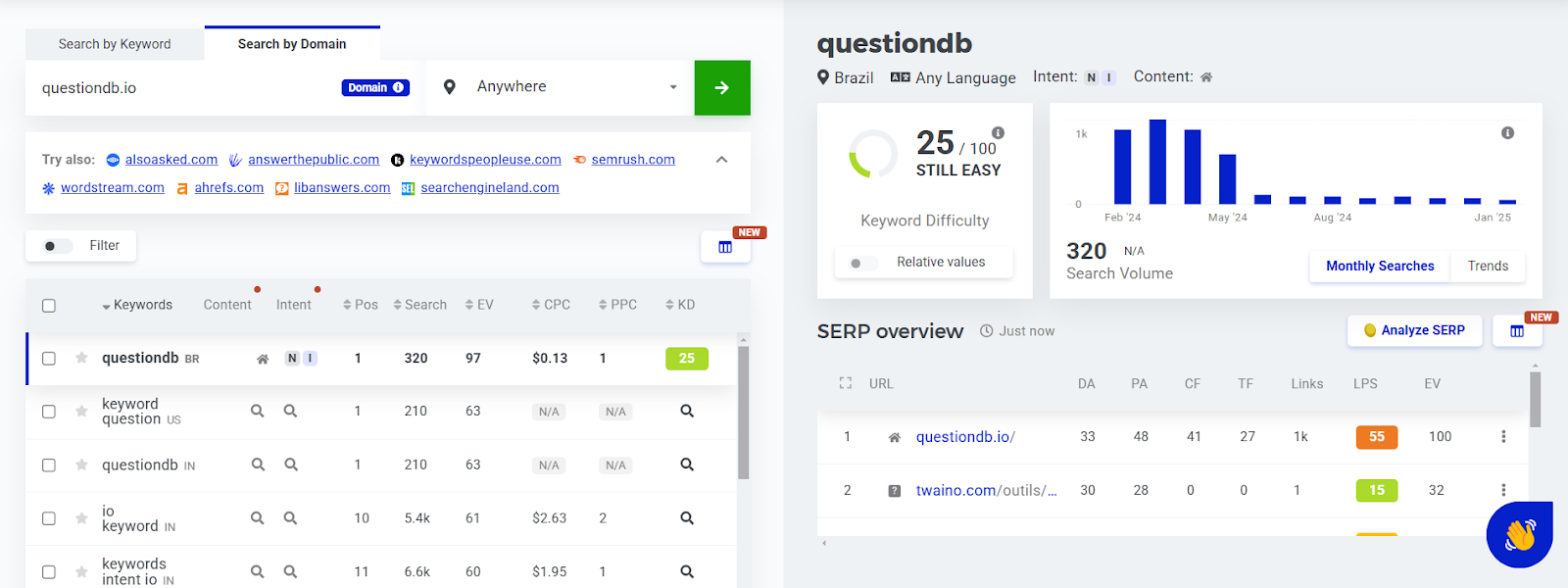
Apart from backlinks, Mangools offers many other SEO tools like KWFinder, SERP Analyzer, Rank Tracker, etc. If you are a small business or SEO beginner, you can use Mangools suite for your overall SEO needs.
On top of that, the intuitive interface makes it so easy to use. Even if you’re using it for the first time, you’ll know what to do.
↳ Not to mention, it’s quite light on the pocket.
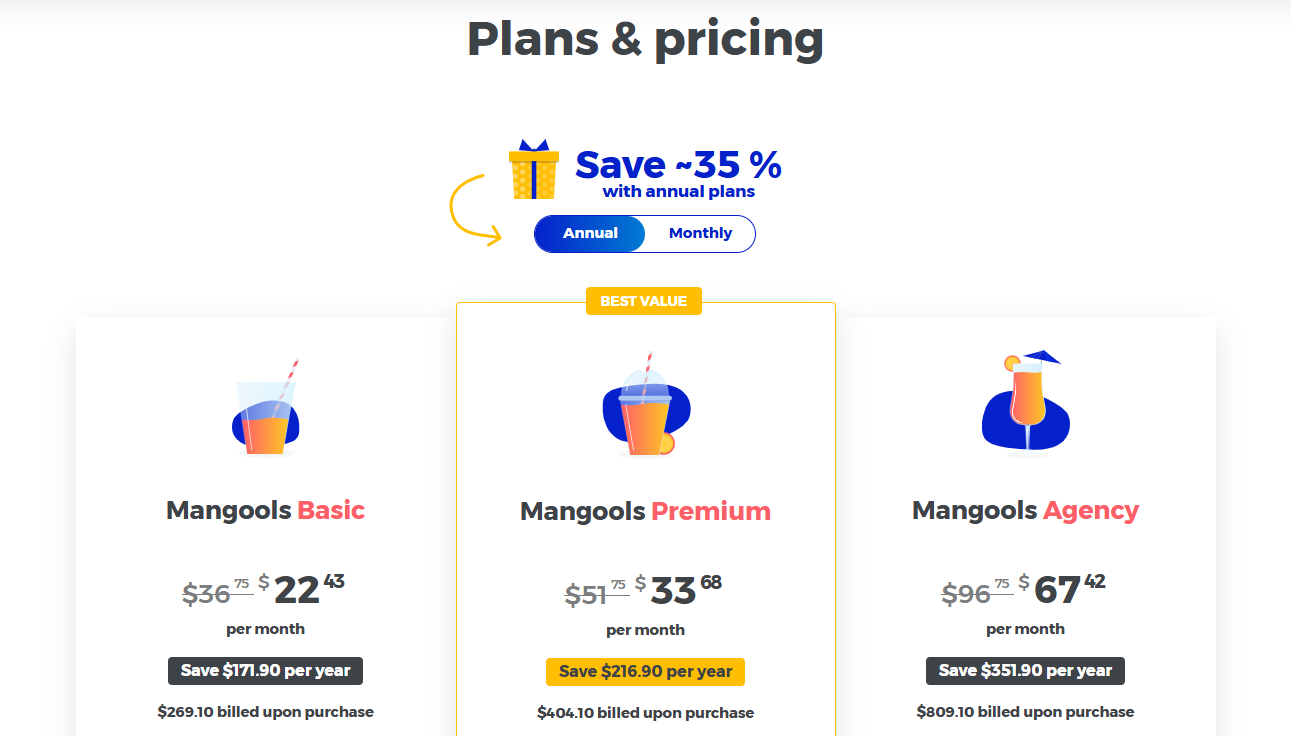
With plans starting at around $22.43/month, and considering its features, it’s such a steal. And while it’s not nearly as advanced as full-fledged tools like Semrush, it’s so worth it for the price.
Overall, Mangools’ LinkMiner is a budget-friendly link-building tool that gives you necessary backlink data to maintain and grow your backlink profile.
| Pros | Cons |
|---|---|
| ✔ Provides detailed backlink reports with key metrics. | ❌ Not as advanced as full-fledged tools like Semrush. |
| ✔ Integrates SEO tools like keyword research to align strategies. | ❌ LinkMiner is just a part of an overall SEO suite so it may not be as affordable if you’re not using other tools. |
| ✔ Offers a user-friendly, intuitive interface. | |
| ✔ Affordable with plans starting at around $22.43/month. | |
| ✔ Delivers essential link analysis without unnecessary complexity. |
8. Google Alerts – Totally Free Linking Opportunity Finder
Google Alerts is a free tool that helps you monitor mentions of your brand, target keywords, or competitors across the web.
↳ I use it to see where my brand/website/business is being mentioned.
Enter any keyword and it’ll show you content where the exact keyword is mentioned. If you find any relevant result, you can reach out to the author and earn a backlink.
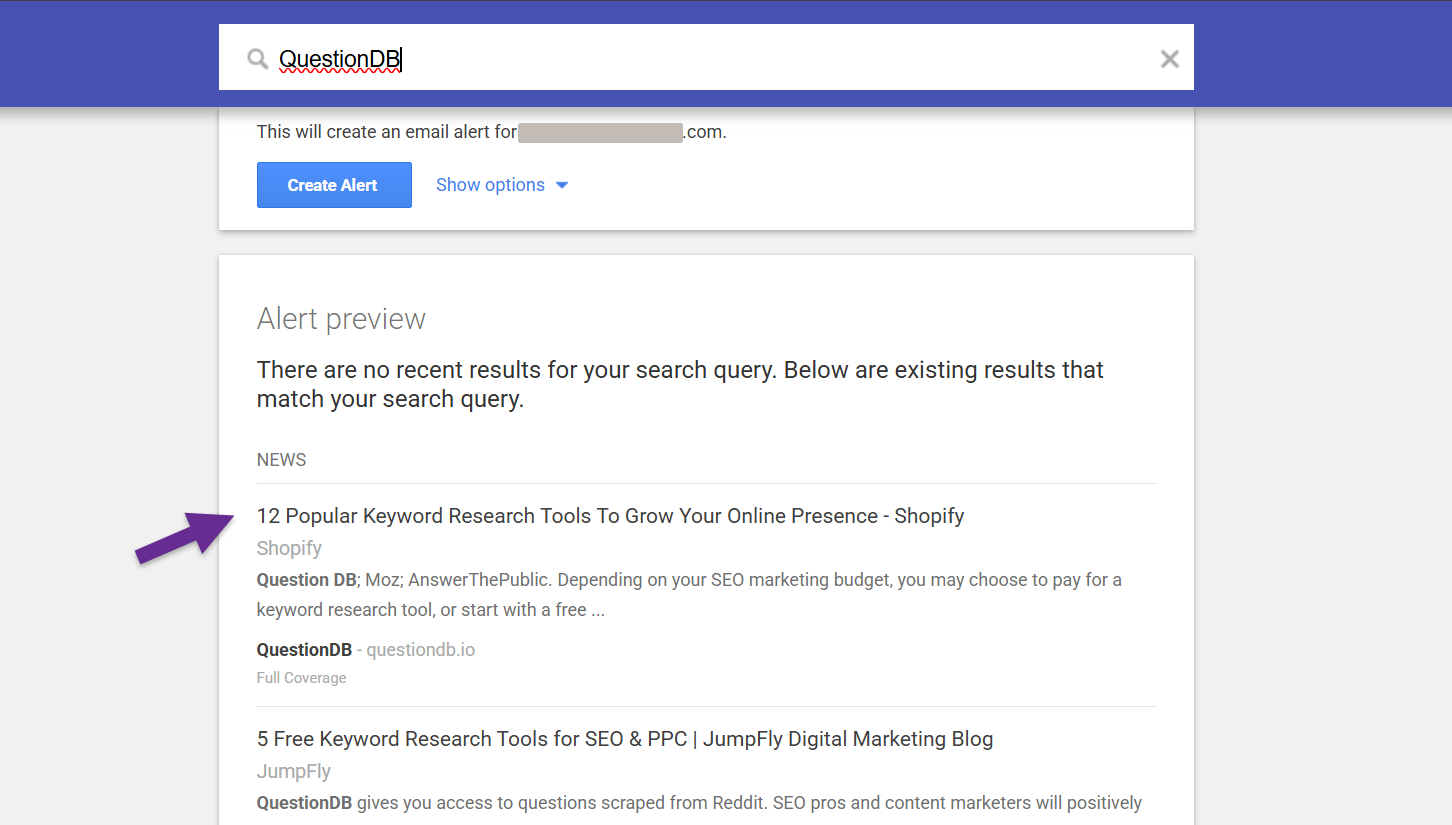
↳ It can also notify you when a certain keyword pops up in any new content.
Set up alerts for specific keywords, and receive email notifications whenever Google finds new content related to them. This helps you quickly spot unlinked brand mentions or potential outreach opportunities.
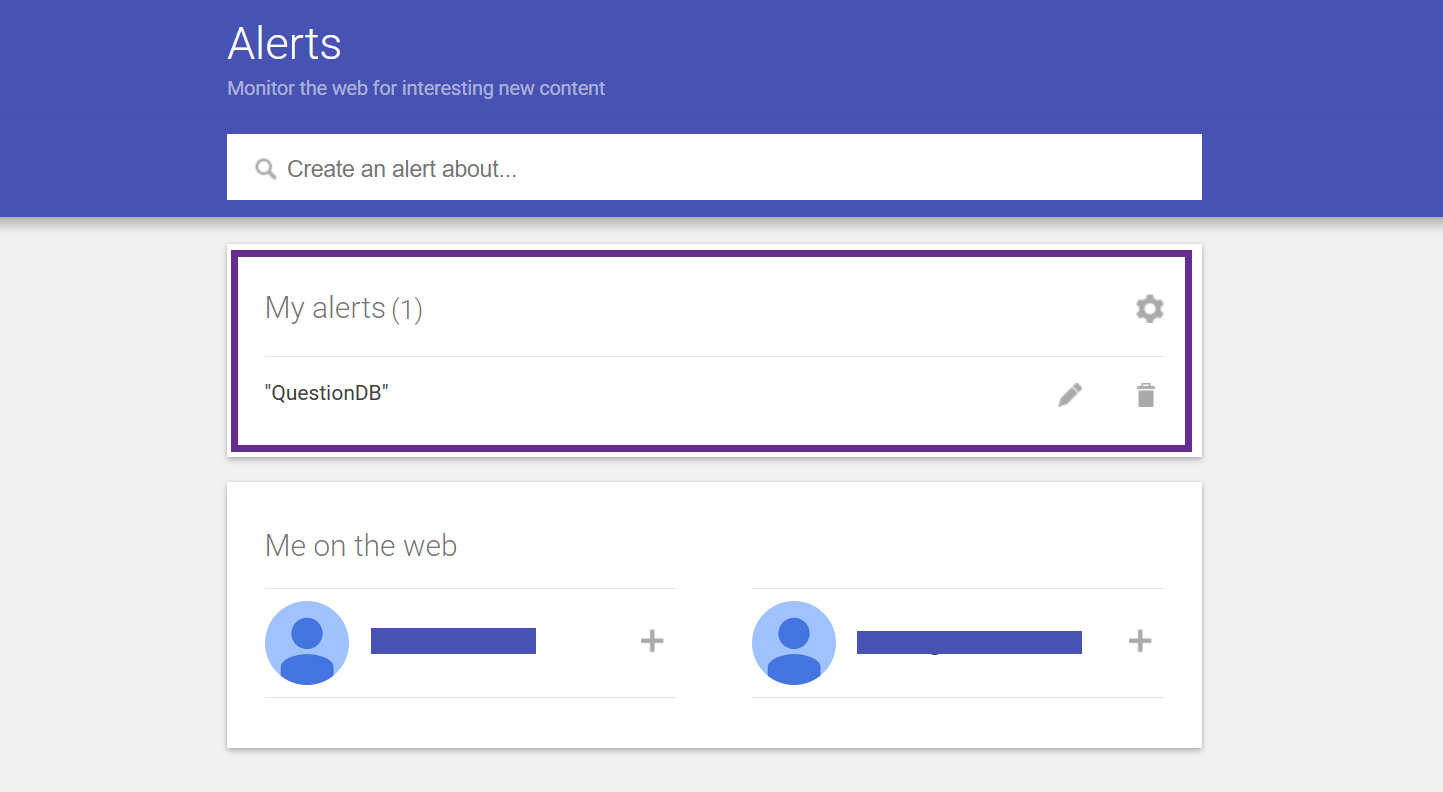
↳ And you pay NOTHING!
Google Alerts is absolutely free. This allows you to do backlink outreach at literally zero cost! That being said, it’s a very basic tool that only informs you when a certain keyword pops up in some new content.
| Pros | Cons |
|---|---|
| ✔ Completely free with no cost involved. | ❌ Offers basic functionality with no insights. |
| ✔ Monitors mentions of your brand, keywords, or competitors. | ❌ Lacks the advanced analysis features of dedicated SEO/link-buidling software. |
| ✔ Sends email alerts when new content appears. | |
| ✔ Helps spot unlinked brand mentions for outreach. | |
| ✔ Great as a supplement to paid SEO tools. |
9. FollowUpThen – Super Cheap Link-Building Tool
FollowUpThen simply reminds you to follow up on outreach emails, so that you don’t miss any potential link opportunity.
↳ The automated reminders are a life saver.
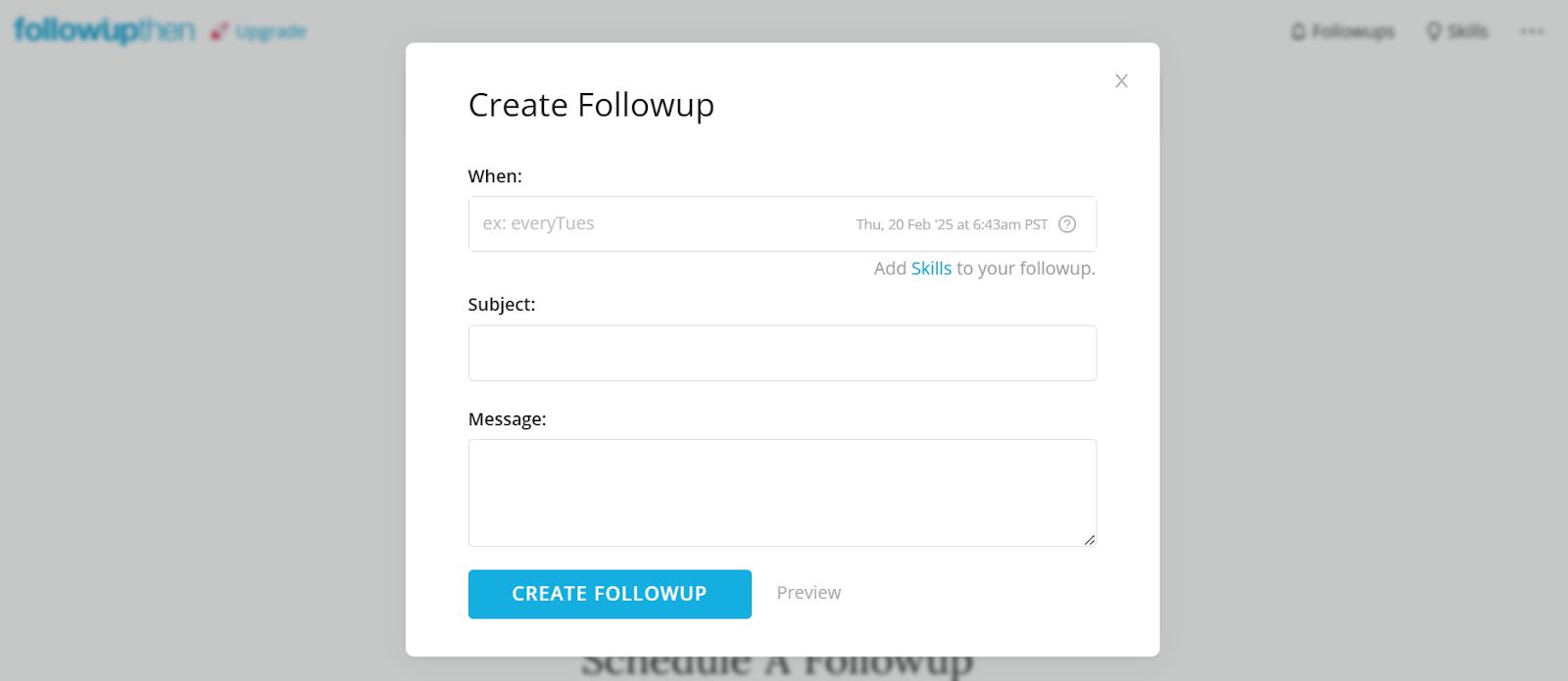
After you send an outreach email, you simply add a FollowUpThen email address (like “[email protected]”) to your BCC. This sends you a reminder to follow up if you don’t get a response within your set timeframe.
This helps me make sure that I don’t miss to follow up on my most promising leads.
↳ And it’s so cheap that you can almost get by using it for free!
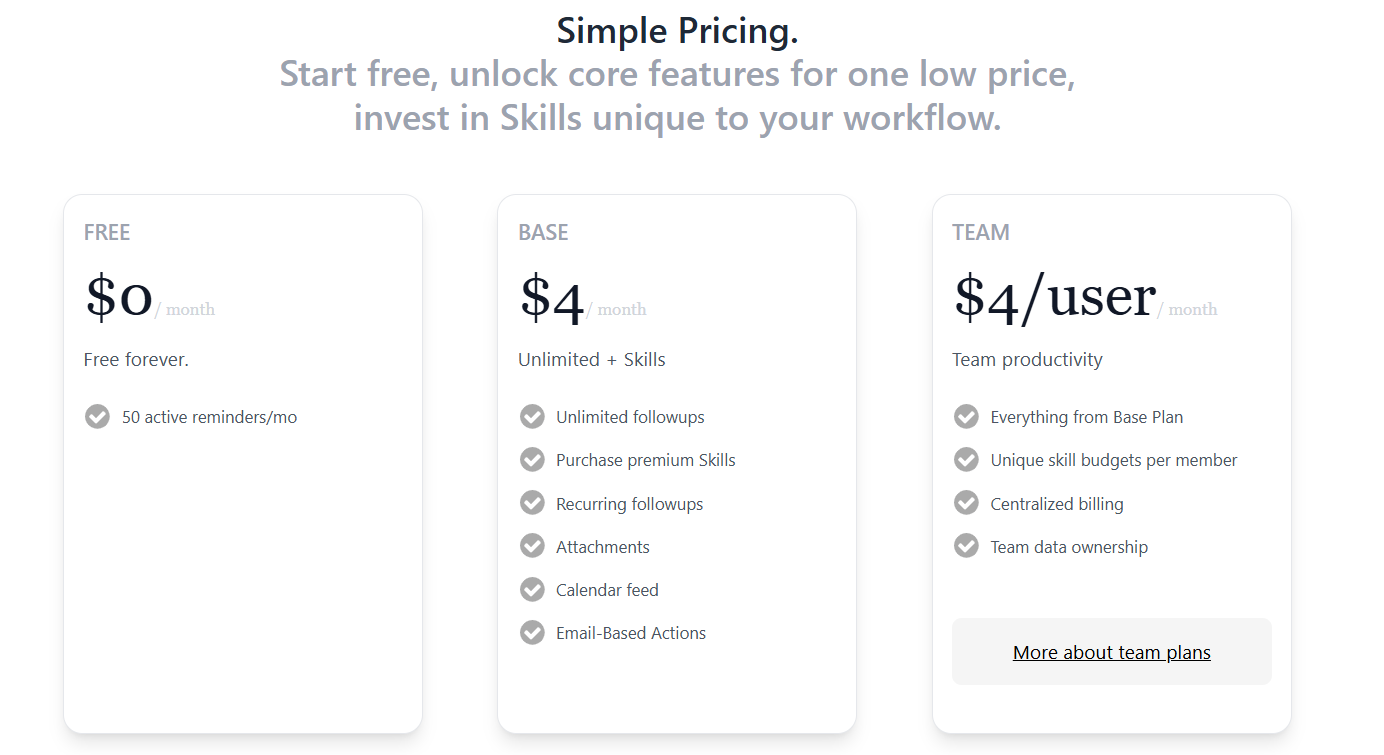
At $4 a month, it’s an extremely low-cost way to improve your link-building outreach. But if you need only up to 50 active reminders per month, you have to pay NOTHING!
So, essentially, FollowUpThen is more for a link-building outreach reminder which can be a useful addition to your link-building strategy.
| Pros | Cons |
|---|---|
| ✔ Reminds you to follow up automatically on outreach emails. | ❌ Limited to managing follow-up reminders– lacks other outreach features. |
| ✔ Boosts response rates and improves backlink acquisition. | |
| ✔ Extremely affordable at $4/month, with a free option for up to 50 active reminders. | |
| ✔ Simple to use by adding a reminder email to your BCC. |
How I Selected and Tested Affordable Link-Building Tools
There were so very many options to choose from. So, I set the following criteria to select the right tools:
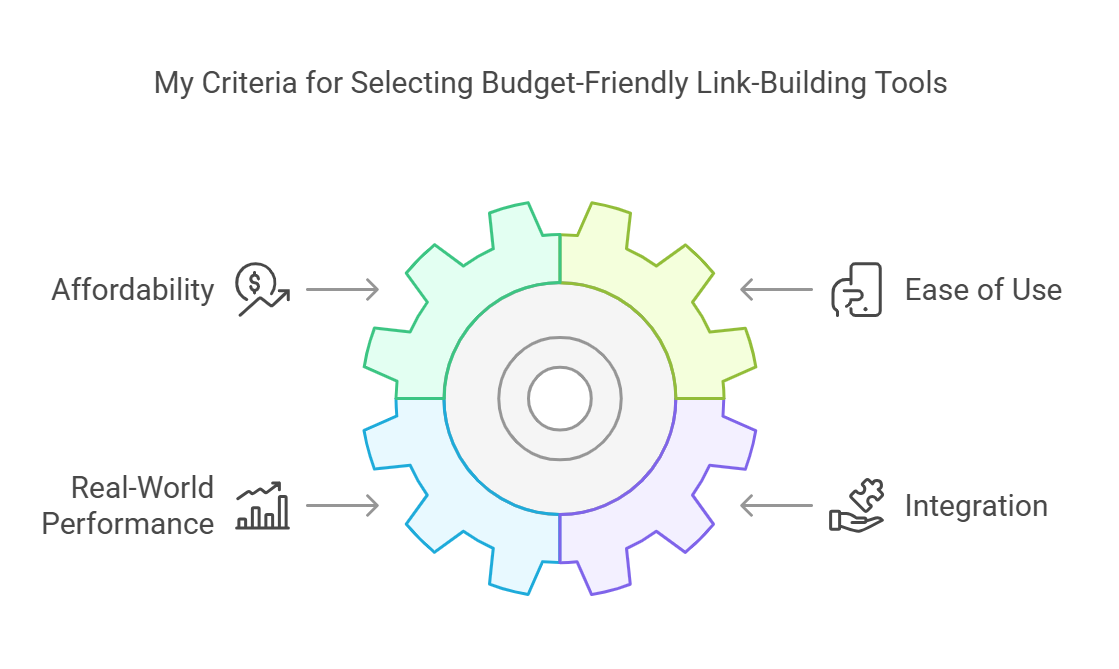
↳ Affordability: I prioritized tools that deliver key features at a low monthly cost or on a pay-per-use model.
↳ Ease of Use: I made sure that the selected tools have a straightforward interface and minimal learning curve, specially for in-house outreach.
↳ Real-World Performance: I tested these tools in actual link-building campaigns, tracking results such as response rates, link quality, and overall efficiency.
↳ Integration: Tools that integrate smoothly with other software (like Google Sheets, Gmail, or CRMs) help streamline workflow and save time. So, this was another important factor.
How to Find the Right Link Building Tool for Your Budget
Finding the right tool starts with understanding your own needs. Ask yourself:
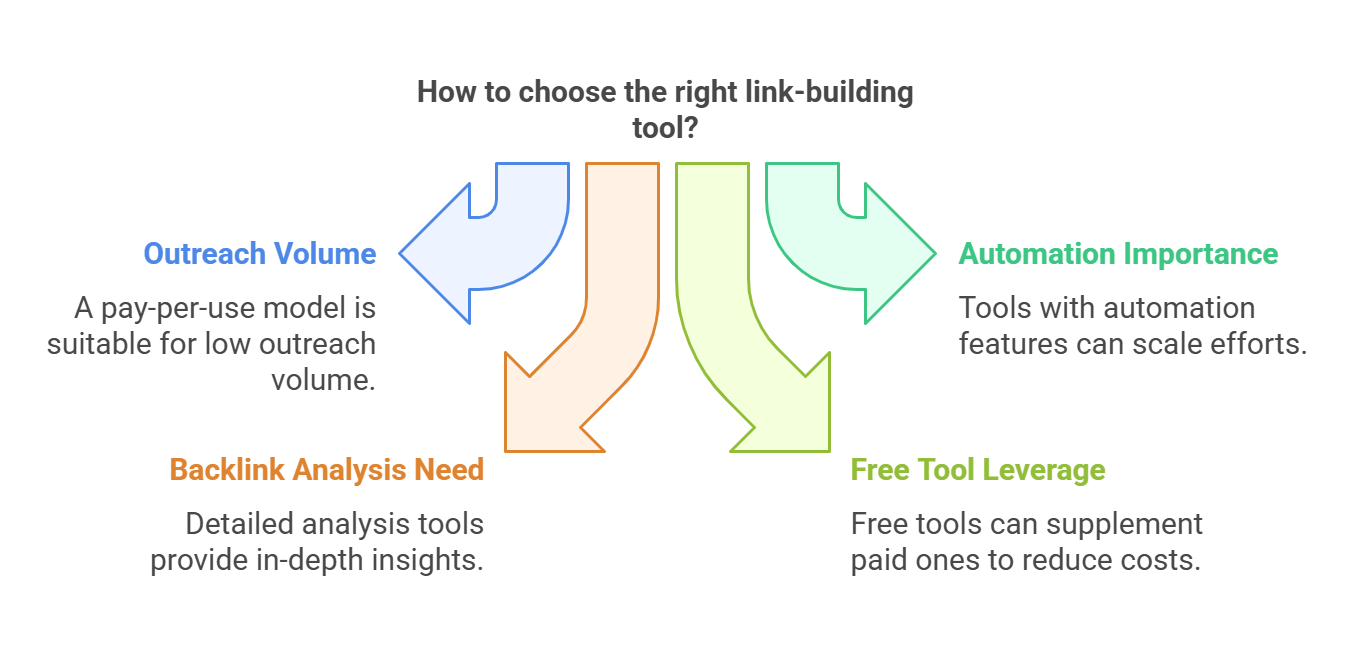
↳ What is my outreach volume?
If you’re just starting, a pay-per-use model like Anymail Finder might be best.
↳ How important is automation?
Tools like Snov.io and BuzzStream offer automated follow-ups and CRM functionalities that can scale your efforts.
↳ Do I need detailed backlink analysis?
For in-depth analysis, consider using a tool like Majestic or Mangools, even if you only use their basic features.
↳ Can I leverage free tools?
Google Alerts and FollowUpThen are excellent for supplementing your paid tools and keeping costs low.
Test free trials and start small. As your campaign grows, you can upgrade or add features based on your evolving needs.
Finding Affordable Link Building Tools
In the real life scenario, you’re going to have to use a mix of the above-mentioned tools for best results. But if you’re on a very tight budget, you can start small (or even free) using some of the tools mentioned above, and invest in bigger tools as your campaign grows.
Check out more guides to help you do SEO with a low or no budget:
↳ Free template for backlink audit
↳ Free keyword research template
↳ How to do keyword research for free
Frequently Asked Questions
Anymail Finder works best for beginners on a tight budget. Its pay-per-use model lets you pay only for confirmed, verified emails, minimizing waste. This approach keeps costs low while building a high-quality outreach list. It suits small businesses or those testing the waters of link-building outreach without expensive commitments.
Absolutely. You can run an entire outreach campaign by combining free tools like Google Alerts with low-cost options such as Linkody and FollowUpThen. Use affordable email outreach tools like Hunter.io and Snov.io to find and verify contacts. This setup delivers effective results without high monthly fees.
Yes, these tools integrate smoothly. I export email lists from Hunter.io or Snov.io directly into BuzzStream or my CRM. Linkody works well with Moz Analytics, and Google Alerts continuously feeds new opportunities into my workflow. This integration streamlines tasks and maintains a cohesive link-building strategy.
Decide based on your outreach volume, required automation, and integration needs. Evaluate free trials and pay-per-use options to assess cost efficiency. Consider features like email verification, CRM functionality, and competitor analysis. Choose the tool that best fits your current workload and can scale with your growing campaign.
Link building costs vary based on scale and needs. Beginners often spend less than $50 per month using pay-per-use models, while comprehensive tools may range from $100 to $400 monthly. Invest in tools that provide quality data and measurable results to improve your outreach and backlink profile effectively.
Get 100 backlinks by combining quality content creation, guest posting, and strategic outreach. Produce valuable, shareable content and target reputable sites. Use outreach tools to contact industry blogs and resource pages. Monitor competitors and consistently follow up with potential link partners to secure quality backlinks.
The best backlink comes from a reputable, authoritative site that aligns with your niche. High-quality backlinks from resource pages, respected blogs, and sites with strong domain authority boost credibility and search rankings more effectively than numerous low-quality links.
Yes, link building is a crucial part of SEO. It signals to search engines that your content is valuable and trustworthy. Quality backlinks enhance your website’s authority, boost search rankings, and drive organic traffic. Integrate link building with other SEO practices for a robust digital marketing strategy.

